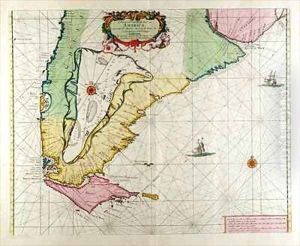Hendrick Doncker Paintings
Hendrick Doncker was a Dutch cartographer, publisher, and globe maker who played a significant role in the development of cartography in the 17th century. Born in 1626, Doncker spent most of his life in Amsterdam, a city that was at the heart of the Golden Age of Dutch exploration and mapmaking. Unlike many of his contemporaries who focused primarily on decorative aspects of mapmaking, Doncker was known for prioritizing accuracy and practicality in his works, making significant contributions to the field of nautical charting.
Doncker established his own shop in Amsterdam around 1659, where he started producing and selling nautical atlases, pilot guides, sea charts, and maritime manuals. His nautical atlases were particularly notable for their constant updates and improvements, reflecting new discoveries and the latest navigational knowledge. These atlases were highly valued by sailors and navigators for their reliability and were used extensively for navigation and exploration.
In addition to his work on sea charts, Doncker also published a variety of other materials, including globes, which were innovative for their time and contributed to advancements in global understanding and navigation. His efforts in publishing and mapmaking were instrumental in disseminating the vast geographic knowledge that was being accumulated during this period of intense exploration and discovery.
Doncker's dedication to accuracy and the practical application of his work set him apart from many of his peers. He was actively involved in the mapmaking process, often revising and updating his publications to ensure they remained useful and relevant. His legacy is marked by his contributions to the improvement of nautical charting and his role in the advancement of geographic knowledge during the 17th century.
Hendrick Doncker passed away in 1699, leaving behind a body of work that continued to influence the fields of navigation and cartography for years to come. His contributions were recognized by his contemporaries and have been studied and appreciated by generations of cartographers and historians.
